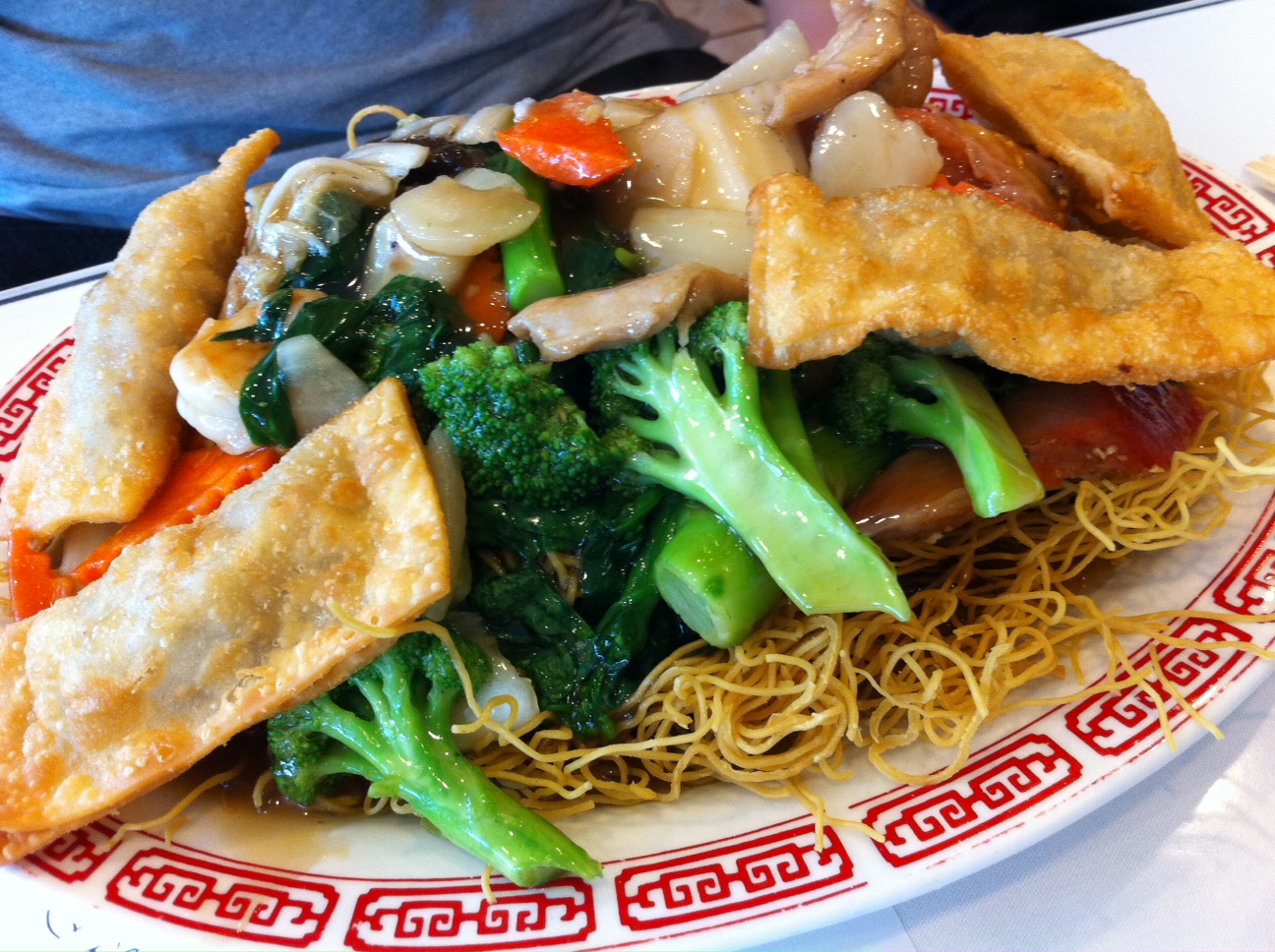


The actual noodle by itself has little flavor. Cantonese/Hong Kong style Cheungfan is usually lightly folded when there is filling inside. Traditionally, the noodles are finished with the addition of a warm, sweetened soy sauce just before serving. The resulting noodle is lightly folded about three times. After steaming for several minutes, the entire freshly steamed noodle sticks to the cloth and must be scraped off, usually on to a metal surface with a thin coat of oil to prevent sticking. As the noodle is cooking, it will start to set around the filling and take hold without falling out when transferring from steamer to dish. Once the liquid mixture is ladled and set, fillings such as shrimp or beef may be added before the noodle is fully cooked. The noodles are typically very thin (roughly 1⁄ 8 thickness). The noodle mixture is steamed in the pan from the bottom up to produce the square rice noodle sheets. Commercial restaurants instead use special oversized steamers that are lined with a steam-permeable cloth. This liquid mixture is poured into a specially made flat pan with holes (similar to a flat colander). The tapioca or glutinous rice flour may be omitted when using rice flour made from certain kinds of aged rice, as chemical changes in the aged rice produce the same texture as the addition of the second starch. The rice flour provided bulk and flavor, while the tapioca flour gives the noodle elasticity and springiness. The mixture has the consistency of heavy cream. The rice noodle sheets are made from a mixture of rice flour and tapioca or glutinous rice flour and water. In Guangzhou, Guangdong Province, people called it laai cheung because it is a noodle roll that pulled or pushed by hand. A snack or breakfast that sold in many street restaurants. Most cooking books mention that the jyu cheung fan was begun in the 1930s. There is no official recording of the history of the rice noodle roll. Combining means the pig intestine noodle roll because the appearance of the noodle roll looks like pig's intestine. The name, jyu cheung fan, “jyu” means “pig” in Cantonese, “cheung” means “intestine”, and “fan” means “noodles”.

When plain and made without filling, the rice noodle is also known as jyu cheung fan. Seasoned soy sauce-sometimes with siu mei drippings-is poured over the dish upon serving. It is a thin roll made from a wide strip of shahe fen ( rice noodles), filled with shrimp, beef, vegetables, or other ingredients. The shell is light and crispy on the outside and just slightly chewy on the inside.A rice noodle roll (also translated as steamed rice roll) is a Cantonese dish from Guangdong Province in southern China, commonly served either as a snack, small meal or variety of dim sum. The water chestnuts add texture and crunch. Little golden pockets with exactly the right amount of meaty filling. Although these are deep fried, this tangy sauce keeps you going back for more. Serve with ajipon brand ponzu and lime juice. Only a small amount is needed, so there’s a nice crispy wrapper to filling ratio. Seal the edges with egg whites. The filling is a mix of pork hash, hamburger, shrimp, and fresh fish cake. Freshly made every day Mon – Sat 6am – 3pm.Ģ00 wrappers? But then again…they’re THAT good! Love the smell of these noodles–simple, doughy and eggy. Located on the right-hand side of Liliha St., heading mauka, just before Liliha BakeryĪunty K says, have to get the deep fry pe. At only $1.40 for 35 wrappers, we bought 2 packs + 8 egg saimin noodles for a quick snack later that night. Just a quick stop at Young’s Noodle Factory on Liliha and we were on our way to get a lesson in gau gee 101! Made with wonton pi from Young’s Noodle Factory, fresh fish cake from Chinatown, and a tangy ponzu dipping sauce. This crispy gau gee is so ono! It does not disappoint.


 0 kommentar(er)
0 kommentar(er)
